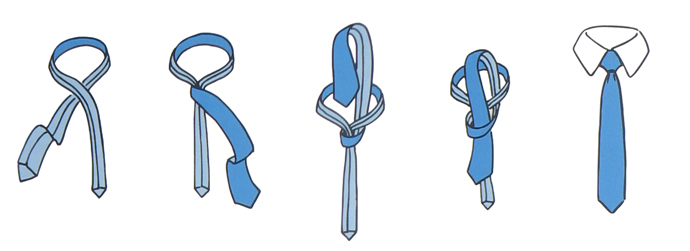This knot only appears to be simple, because compared to Four-in-hand it has even fewer moves. In fact, it's a little harder to shape it nicely. It is worth applying it primarily to ties made of thick fabric.
Origin
In English, "oriental” means "oriental origin of Asian tubes”. This knot was first described by Fink and Mao. They argue, that in Asian countries the oriental knot is so popular, like Four-in-hand in Europe and USA.
Caution
Because the oriental knot only takes three moves, he is generally mentioned first by stylist advisers, but despite its simplicity, it is not necessarily the most suitable for beginners. Its a small elegant shape, which makes it great for thick and woolen ties can only be achieved through exercise. As a novice, you should start with a Four-in-hand or Kent knot.
Important
- Before tying, the tie is folded seam up around the neck (outside). When the knot is ready, the wider end of the tie is turned inside out, but the rest remains on the left and must be tucked well under the shirt collar.
- It is easy to loosen this knot and therefore the tie needs to be carefully knotted and put on
- Because it is only crossed once, very little of the tie gets “used up”. It happens often, that the narrow or wide end of the tie is too long. For this reason, the knot is suitable for tall men.
Binding method
In a few words
- inverted (basic form)
- slightly asymmetric
- for small collars
- for thick ties
- the only one that matches wool ties
- it does not resolve itself
- for tall men
